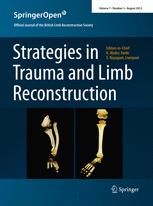
Intertrochanteric fracture: Cephalomedullary nail is no different from sliding hip screw
This report has been verified
by one or more authors of the
original publication.
.2012....
165 patients with low-energy intertrochanteric fractures were randomized to receive treatment using the extramedullary sliding hip screw or the dual lag screw cephalomedullary nail. Over a mean follow up of 36 months, there were no differences between the two groups for functional recovery, intra-operative outcomes, length of hospital stay, delay to surgery, re-operation rate, mortality, complication rate, and implant positioning. The cephalomedullary nail group had a significantly shorter mean operation time, but a longer fluoroscopy time than the sliding hip screw group. In three cases in the cephalomedullary nail group the proximal screws displaced (Z effect).
Unlock the full ACE Report
You have access to {0} free articles per month.Click below to unlock and view this {1}
Unlock NowCritical appraisals of the latest, high-impact randomized controlled trials and systematic reviews in orthopaedics
Access to OrthoEvidence podcast content, including collaborations with the Journal of Bone and Joint Surgery, interviews with internationally recognized surgeons, and roundtable discussions on orthopaedic news and topics
Subscription to The Pulse, a twice-weekly evidence-based newsletter designed to help you make better clinical decisions
Exclusive access to original content articles, including in-house systematic reviews, and articles on health research methods and hot orthopaedic topics
Or upgrade today and gain access to all OrthoEvidence content for just $1.99 per week.
Already have an account? Log in


Subscribe to "The Pulse"
Evidence-Based Orthopaedics direct to your inbox.
{0} of {1} free articles
Become an OrthoEvidence Premium Member. Expand your perspective with high-quality evidence.
Upgrade Now













































































